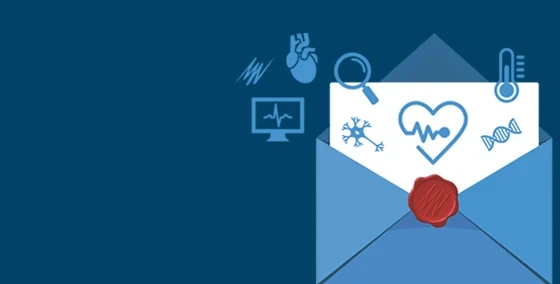Each year, the Human Anatomy and Physiology Society (HAPS) brings together hundreds of educators to celebrate and promote excellence in teaching anatomy and physiology. This year, ADInstruments was proud to sponsor two educators in attending the meeting and presenting on their unique teaching experiences and findings. In this blog, we highlight the presentation material covered by Dr. Shari Litch-Gray, Professor of Biology at Regis College in Weston, Massachusetts.

Dr. Shari Litch-Gray
Meet Dr. Shari Litch-Gray, Professor in the STEM Department at Regis College. Shari has been a part of the Regis faculty for over 10 years, and currently teaches Human Anatomy & Physiology and Animal Physiology at the university. A distinguished and well-accomplished educator, Shari has observed the evolution of different trends in the educational landscape over the years, including the improvement and use of laboratory technologies to engage students and enhance their learning experience.
In recent years, Shari began to face various challenges in her Animal Physiology course: a decline in enrollment numbers, limited offerings for students as a biennial course, misconceptions around the course being for pre-veterinary students only, and an outdated/challenging to use data acquisition system.
With a strong personal belief that students are best prepared for the future by applying their content knowledge, Shari made it her mission to transform her lab in the hopes of appealing to a broader student demographic and ultimately best prepare her students. As part of this mission, she opted to use a human subject model for data collection in the lab and adopted Lt Sensors hardware. By pairing Lt Sensors with the online learning platform Lt, Shari provided her students the opportunity to get hands-on by collecting and analyzing their own biosignals.
Incorporating Biosignal Data in the Lab
Shari’s lab course was structured to reinforce lecture material through exercises in skeletal muscle, the cardiovascular system, electrochemical signaling in nervous tissue, the respiratory system, and the excretory system. Additionally, she encouraged students to apply lecture objectives through an independent lab project at the end of the semester.
When restructuring her lab with Lt Sensors, Shari first identified which biosignals and associated experiments would best complement lecture material - as the goal was to help bring this material together within the lab. By matching her selected signals with the corresponding Lt Sensor, she knew exactly what would be needed for the experiments and could build out her lab schedule.
| Lt Sensor | Signal/Use |
|---|---|
| Biopotential | ECG/EKG, EMG, EOG, EEG |
| Finger Pulse | Pulse, HR |
| Tendon Hammer | Reflex measurements |
| Grip Force | Grip strength, muscle fatigue |
| Respiratory Belt | Respiratory rate |
| Skin Temperature | Skin surface temperature |
| Cardio Microphone | Korotkoff sounds, heart sounds |
| Blood Pressure | Systolic, diastolic, MABP, pulse, Korotkoff sounds |
Over the course of the semester, Shari’s students utilized Lt Sensors in a variety of experiments within Lt, which allowed them to develop familiarity with both the equipment and different types of biosignals.
Her lab was a space in which they could learn how to use the equipment properly, analyze the signals, and most importantly apply the concepts they were learning in lecture.

Shari's students using the blood pressure sensor in a lab
Incorporating Independent Project Work
Toward the end of the semester, students were challenged to design an experiment using Lt Sensors in order to investigate a hypothesis of their choosing! The project was structured with the following steps:
- Pose a hypothesis
- Design an experiment
- Acquire and analyze the physiological data
After detailing and submitting their project proposals, the experiments were built out using Lt’s editing and customization tools so that students could actually work through their procedures and collect data to test their hypotheses. They used this data to write up a final report in which they drew conclusions and proposed future research directions.
Shari’s work in transforming her lab experience for students did not go unnoticed. In an end-of-year evaluation, students offered positive feedback about their experiences with the independent project (and throughout the course as a whole) because of how hands-on and interactive it was.
"This lab course was brilliant. The content in lab was very well connected to what was being taught in lecture and they both blended seamlessly. I feel like this lab expanded our knowledge about physiology and supported what was being taught in lecture because of the technology used. Not only this, but to be able to work hands on with EKGs, pulse oximeters, thermometers, etc. brought a different type of understanding to the course content. " -Student feedback
HAPS 2024
At the HAPS 2024 Annual Meeting, Shari presented on her experience incorporating Lt Sensors in a workshop titled Use of Biosignal Data in Upper-Level Undergraduate Physiology Lab. ADInstruments was proud to sponsor this workshop and we are thrilled to continue supporting incredible educators like Shari in their commitment to enhancing anatomy and physiology education.

Dr. Shari Litch-Gray stands ready to present her workshop at the HAPS 2024 Annual Meeting
If you would like to view Shari’s full presentation and learn more about how she incorporated biosignal data collection into her lab, you can click here.
We would like to thank Dr. Shari Litch-Gray once again for taking the time to attend HAPS and present on her experiences!

Dr. Shari Litch-Gray
Dr. Shari Litch-Gray
Professor
STEM Department
Regis College
Dr. Shari Litch-Gray has earned a B.S. in Biology from Tufts University, an M.S. in Reproductive Physiology from the University of New Hampshire, and a Ph.D. in Reproductive Physiology from the University of New Hampshire.
In addition to being a member of the HAPS community, Shari is also a part of the Zebrafish Husbandry Association (ZHA) and International Zebrafish Society (IZFS). Shari has received a number of honors and awards during the course of her career, including the New Hampshire Outstanding Teaching in Postsecondary Education Award in 2007.

